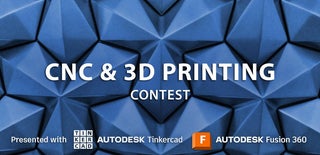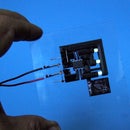Introduction: 3D Print a Book
A long lasting book can be 3D printed in one piece. The letters are raised, so they cannot fade over time like ink. If printed in the right material, these books could last several hundred years.
The intro pic shows the TPU version of a flexible book, the PLA version of the hinged book, and a DNA scroll book.
Supplies
Access to a filament 3D printer.
PLA filament of your choice. I used 2 color quantum PLA available from Matterhackers.
MatterHackers Quantum Dual-Color PLA | MatterHackers
Ninjatek Ninjaflex flexible filament- best prices are usually found on Amazon. Other, stiffer TPU filaments might also work.
Fusion 360 design program- if you want to modify the book files or add embossed text.
Text or writing of your choice.
Step 1: How It Works
Hinged Book
The first pic shows a small book printed with bio-degradable PLA. It is designed with vertical hinges between pages. Quantum PLA was used for fun, as it changes color from back to front as you print it, but any solid color PLA can be used.
Flexible Book
The next pic shows a second way to print a small book. It is printed with Ninjaflex elastomeric TPU which is very flexible. Ninjaflex is the closest thing I have seen to a 3D printed leather substitute. It is almost as tough and flexible as natural leather. You can sit on these books or step on them, and they remain undamaged.
I have printed ninjaflex for many years and a small piece was set outside in the sun, rain, and snow, for seven years. It is still flexible and in very good condition. If kept inside, these books could last for hundreds of years.
Larger Books
To be legible when printed vertically, the embossed text must be fairly large to be easily read. The two books shown are pocket sized books measuring 1.5 inches by 2.1 inches high. Much larger books can also be printed, and files are provided for that.
Feild Notebooks
You can also print blank notebooks for taking notes or making handwritten books with much smaller text or drawings. If you use a ball point pen or felt tip pen with waterproof ink, the writing and the book can withstand getting wet.
DNA Scroll Book
The scroll book can be embossed on the inside or the outside to create a readable book or letter. The blank version can also be handwritten.
Step 2: Printing the Books
The books are all printed vertically without supports.
Settings For PLA
Use the settings that you use for the PLA that you usually print.
Settings for Ninjaflex
I used an old Replicator 2 printer to print the Ninjaflex books. Here are the settings used in MakerBot:
No supports
Infill: 20 per cent
Shells: 2Layer
Height: .2mm
Temp: 225 C
Speed Extruding: 30 mm/s
Speed Traveling: 150 mm/s
Step 3: Sizing the Books
Using Fusion360 or a similar program you can easily enlarge the books by stacking a duplicate over the small book and joining them. You can then widen the pages to what you need using the extrude command.
The small book is 1.5 inches by 2.1 inches and takes almost 2 hours to print. The larger book is 2.4 inches by 3.1 inches and took 4.5 hours to print.
Evidence.stl and what2.stl are embossed books that you can print to show examples of embossed text.
STL files are provided here for printing the sample books and blank books. Fusion 360 files are also provided if you want to modify the books or emboss your own text to the blank books.
Attachments
Step 4: Fusion360 Embossing
Create The Text
In solid mode, click on Create-Create sketch.
Make a text frame about the size of the book page.
Set height at .18 inches.
Write your text.
Click OK - finish sketch.
Embossing
Move text sketch over front of page.
Click on Create-emboss.
Click on the text sketch you created.
Click on Select Faces.
Click on the book plane (page) you want to emboss on.
Set depth to .02 inches.
Embossing The Scroll
The inside or outside of the scroll book can also be embossed in Fusion360.
Step 5: DNA Scroll Book
The DNA scroll book is read in a crude version of the way DNA memory molecules are read in every human cell nucleus. A twisted spiral is unwound to be read and then rewound back into a spiral. In this case, a view clip is used to read a page. The view clip slides in the end of the spiral tube when the book is not in use. The clip was a first try and could be improved for a flatter page.
The scroll tube requires temporary bridges in the spiral slot to be able to be printed. These are cut off with scissors when ready to read any embossed text inside. This makes it useful to create a sealed, quite permanent letter.
Using the F3d file in Fusion360, you can change the diameter, length and thickness of the scroll book.
Step 6: Other Possibilities
While this type of book printing is not practical for creating full size books with small text, it should be possible to create a 3d printer with multiple print heads that could eventually replace the paper book.
Resin Printer
It may be possible to print the hinge version with much smaller text using a resin printer. Maybe someone with such a printer could try it and share the results. There are also newer flexible resins that might be used to print the flexible version of a book.
Two Color Printer
A two-color printer might also be used to print text with more contrast.

Participated in the
CNC and 3D Printing Contest




























